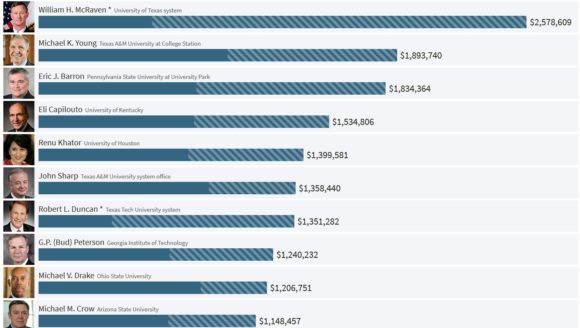Dear Commons Community,
Michelle Goldberg had a column yesterday calling out President Trump for using anti-Semitism in his attacks on four congresswomen of color. Here is an excerpt (the full column is below).
“Republicans are only a short step away from such shamelessness when they try to deflect from the president’s racism by accusing his foes of anti-Semitism. “Montanans are sick and tired of listening to anti-American, anti-Semite, radical Democrats trash our country and our ideals,” Senator Steve Daines of Montana tweeted on Monday, proclaiming his solidarity with Trump.
It’s true that Omar has said things that were freighted with anti-Semitism, for which she has expressed regret. But it is grotesque to argue that that excuses racism against her, or that Trump’s taunts have anything to do with protecting Jews. This is a president who regularly deploys anti-Semitic tropes and whose ex-wife said that he slept with a volume of Hitler’s speeches by his bed. When speaking to American Jews, he’s called Israel “your country” and Benjamin Netanyahu “your prime minister,” suggesting that in his mind, we don’t fully belong here any more than Omar does.
When the right presents Trump as an enemy of anti-Semitism, it goes beyond hypocrisy. Jews have thrived here as they have in few other places in the world because America at least aspires to be a multiethnic democracy, not an ethnostate. If Trump succeeds in making citizenship racialized and contingent, that’s an existential threat to American Jews.
Trump and his accomplices are simultaneously assaulting the political foundation of Jewish life in America and claiming they’re doing it on the Jews’ behalf. As the Montana Association of Rabbis wrote in an open letter to Daines on Wednesday, “We refuse to allow the real threat of anti-Semitism to be weaponized and exploited by those who themselves share a large part of the responsibility for the rise of white nationalist and anti-Semitic violence in this country.”
It’s worth thinking about how we got to a point where anti-Semitism can be exploited as it has been this week.”
Great column, Ms. Goldberg!
Tony
—————————————————————————————–
New York Times
Defenders of a Racist President Use Jews as Human Shields
(Trump’s bigoted attack on four congresswomen of color has nothing to do with fighting anti-Semitism.)
Michelle Goldberg
July 20, 2019
Sebastian Gorka, a onetime adviser to Donald Trump, wore a medal from the Vitezi Rend, a Hungarian group historically aligned with Nazism, to one of Trump’s inaugural balls. Gorka was reportedly a member of the group, whose founder, the Hungarian autocrat Miklos Horthy, once said, “For all my life, I have been an anti-Semite.”
Max Berger is a Jewish social justice activist who has long been deeply involved in Jewish communal life. He’s the co-founder of IfNotNow, a group of American Jews devoted to ending Israel’s occupation of Palestinian territory, and recently joined Elizabeth Warren’s presidential campaign.
In a tweet this month, one of these men tarred the other as an anti-Semite. If you’ve been following the increasingly bizarre turn that American discussion of anti-Semitism has taken, you can probably guess which one.
That’s right, it was Gorka who called Berger an anti-Semite, for having once joined in an internet in-joke about a nonexistent group called “Friends of Hamas.” (Gorka’s tweet appears to have since been deleted.) It wasn’t the only time this month that Gorka accused a Jew of Jew-hating; he’s also charged the anti-Trump conservative writer Anne Applebaum with “standing with the anti-Semites,” demanding that she explain “how you justify this to the community.”
If this were just Gorka, you could dismiss it as trolling. But his tweets were only a particularly brazen example of how right-wing gentiles are wrapping themselves in a smarmy philo-Semitism to attack the left, even when that means attacking either individual Jews or the political interests of most Jewish Americans.
Such Christian appropriation of the fight against anti-Semitism reached its grim nadir this week. As Trump’s racist invective against Ilhan Omar and three other freshman Democratic congresswomen has dominated the news, the president’s defenders have used Jews as human shields, pretending that hatred of the quartet is rooted in abhorrence of anti-Semitism. On Tuesday, an evangelical outfit called Proclaiming Justice to the Nations accused the Anti-Defamation League — the Anti-Defamation League! — of siding with anti-Semites after the ADL called out Trump’s racism. The group even had the audacity to hurl a Hebrew denunciation — “lashon hara,” or “evil tongue” — at the Jewish civil rights organization.
Republicans are only a short step away from such shamelessness when they try to deflect from the president’s racism by accusing his foes of anti-Semitism. “Montanans are sick and tired of listening to anti-American, anti-Semite, radical Democrats trash our country and our ideals,” Senator Steve Daines of Montana tweeted on Monday, proclaiming his solidarity with Trump.
It’s true that Omar has said things that were freighted with anti-Semitism, for which she has expressed regret. But it is grotesque to argue that that excuses racism against her, or that Trump’s taunts have anything to do with protecting Jews. This is a president who regularly deploys anti-Semitic tropes and whose ex-wife said that he slept with a volume of Hitler’s speeches by his bed. When speaking to American Jews, he’s called Israel “your country” and Benjamin Netanyahu “your prime minister,” suggesting that in his mind, we don’t fully belong here any more than Omar does.
When the right presents Trump as an enemy of anti-Semitism, it goes beyond hypocrisy. Jews have thrived here as they have in few other places in the world because America at least aspires to be a multiethnic democracy, not an ethnostate. If Trump succeeds in making citizenship racialized and contingent, that’s an existential threat to American Jews.
Trump and his accomplices are simultaneously assaulting the political foundation of Jewish life in America and claiming they’re doing it on the Jews’ behalf. As the Montana Association of Rabbis wrote in an open letter to Daines on Wednesday, “We refuse to allow the real threat of anti-Semitism to be weaponized and exploited by those who themselves share a large part of the responsibility for the rise of white nationalist and anti-Semitic violence in this country.”
It’s worth thinking about how we got to a point where anti-Semitism can be exploited as it has been this week. What we’re seeing is the absurd but logical endpoint of efforts to conflate anti-Semitism with anti-Zionism, and anti-Zionism with opposition to Israel’s right-wing government. Only if these concepts are interchangeable can Jewish critics of Israel be the perpetrators of anti-Semitism and gentiles who play footsie with fascism be allies of the Jewish people. Only if these concepts are the same can an evangelical group claim that Jews are being anti-Jewish when they protest Trump, because Trump loves Israel.
Jeremy Ben-Ami, the president of the liberal Zionist group J Street, puts part of the blame for this rhetorical derangement at the feet of the American Jewish establishment. Its leaders made an alliance of convenience with right-wing Christian Zionists, who support the state of Israel as the fulfillment of biblical prophecy and a bulwark of Western values in the Middle East, but care little about pluralism in the United States.
The Jewish leaders, said Ben-Ami, “made a deal with the devil. And what they’ve done is they’ve laid down in bed with white nationalists and racists and bigots.” Now white nationalists and racists and bigots — and those politically aligned with them — feel entitled to use their backing of Israel as an alibi when their leader indulges in racist incitement.
“When they start asking people to go back where they came from, that’s the first line of attack on the Jewish people over centuries,” said Ben-Ami. It’s terrifying enough to have a president who says such things. It’s an almost incalculable insult for Trump and his enablers to act as if he’s helping the Jews when he adopts the language of the pogrom.










